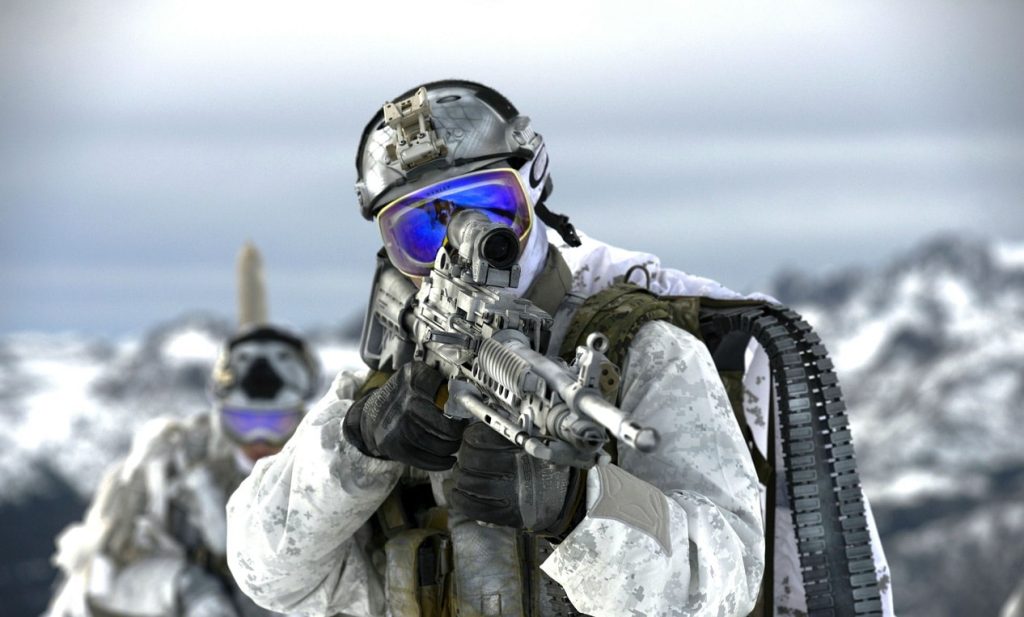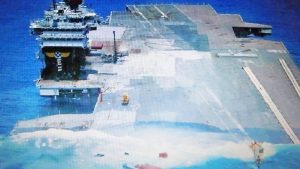Like U.S. Army Delta Force, DEVGRU is under the umbrella of JSOC, which coordinates special ops missions for counter-terrorism and direct action to eliminate bad guys around the world.

What exactly is SEAL Team Six? You’ve probably never heard of the U. S. Navy Special Warfare Development Group. This sounds like a Navy unit that conducts humdrum business far from the battlefield. But that couldn’t be further from the truth. The Special Warfare Development Group, called DEVGRU for short, is better known as SEAL Team Six, although the Joint Special Operations Command (JSOC) prefers to call it DEVGRU these days, and the Navy sometimes just denies SEAL Team Six exists.
The Tier One unit is responsible for killing Osama bin Laden in 2011.
Like U. S. Army Delta Force, DEVGRU is under the umbrella of JSOC, which coordinates special ops missions for counter-terrorism and direct action to eliminate bad guys around the world. DEVGRU also works with the CIA’s various secret paramilitary groups such as the special activities division and the CIA special operations group.
The Iran hostage crisis of 1979 and its ensuing failed rescue attempt in 1980 by U. S. special operations was a watershed moment for the Navy SEALs. Navy special warfare learned from the disaster that killed eight American rescuers and resulted in the loss of two aircraft and zero hostages rescued.
One lesson learned was the need for innovative leadership. The SEALs wanted a colorful and bold character with tons of imagination and cunning. His name was Richard Marcinko, and he would have the ultimate answer for the failed mission. Marcinko was awarded two Silver Stars and four Bronze Stars for his service in Vietnam. SEAL Team Six was Marcinko’s baby.
At that time in 1980, there were only two SEAL teams, Marcinko, ever clever, called it “Six” to fool the Soviets into thinking the Navy had more teams. Marcinko began selecting his people that would be able to operate in plain clothes, speak foreign languages, and be highly-trained experts in traditional SEAL duties.
The main mission was counter-terror and hostage rescue. Marcinko wanted the best marksmen in the SEAL community, and he assembled 75-operators. Seal Team Six soon became controversial to Navy brass due to its nontraditional ways, rebellious culture, and hard-partying. The Navy shut down the original Seal Team Six in 1987 and created DEVGRU in its place.
DEVGRU still has its reputation as the best of the best SEALs. Before being considered by DEVGRU, SEALs have to prove their reputation with numerous deployments in Iraq, Afghanistan, and all over the world. DEVGRU operators tend to be older and more mature. They have a unique selection process that relies on word-of-mouth recommendations that send forward the most physically fit, psychologically grounded, and best combat practitioners. They attend an extremely tough board of review, and their backgrounds are checked with other SEALs to make sure they have an excellent peer grade on their teamwork and tactical and technical skills.
Then, according to SOFREP, they go through what’s called the “Green Team” training phase. Instructors shadow each trainee in ways that go above and beyond what each operator is used to.
Like Delta Force, DEVGRU is broken down into squadrons and troops, that are comprised of assault, support, and intelligence, including clandestine operations. The main mission is counter-terrorism plus reconnaissance and intelligence gathering to thwart acts of terror before they happen.






